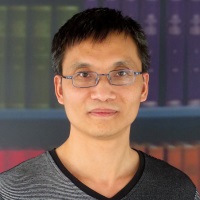
A University of Auckland bioengineer is part of an international team whose research will help doctors mend tiny hearts.
Dr Jichao Zhao from Highland Park worked with researchers from Britain and Denmark using micro-CT to examine tiny donated baby hearts with Congenital Heart Disease. His role was to develop special algorithms for data analysis.
“We have developed a novel computational approach, “structure tensor analysis”, to visualise and evaluate three-dimensional cardiac cells at a much higher resolution than normal,” says Dr Zhao.
This means researchers can demonstrate the anatomy of complex heart problems faster and in more detail than ever before and use 3D printing of the heart for surgeons to examine.
Congenital Heart Disease occurs when a heart is not formed correctly in the womb. In the UK it is the most common birth defect affecting eight in every 1000 babies born. In many congenital heart defects the cardiac conduction system that generates the heartbeat and carries electrical signals around the heart is not in the normal position.
When surgeons repair small hearts, they try to preserve this cardiac conduction system. Even so, there is a risk of damage to the system during surgery, because it is so hard to be sure of its precise location and because stitches or patches may need to be placed very close to it. This can lead to a “heart block”, requiring an artificial pacemaker to synchronise the heartbeat again.
The new research, with Dr Zhao’s help, uses very detailed and rapid X-ray techniques showing exactly where the conduction system has developed.
“Surgeons can then plan their surgery to reduce the risk of heart block and the need for a pacemaker,” says Dr Zhao.
Dr Zhao is a senior research fellow at The Auckland Bioengineering Institute and leads a research team that is investigating effective strategies for cardiac treatment using novel panoramic mapping, structural imaging and analysis and computer modelling approaches.









